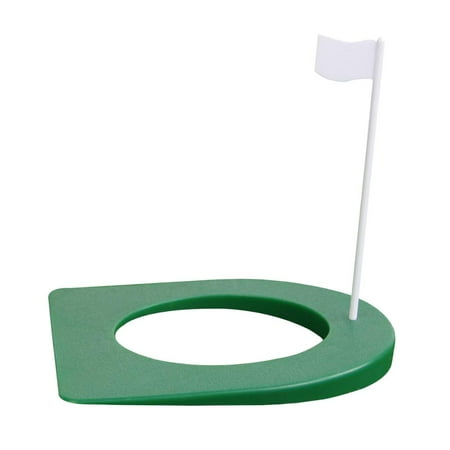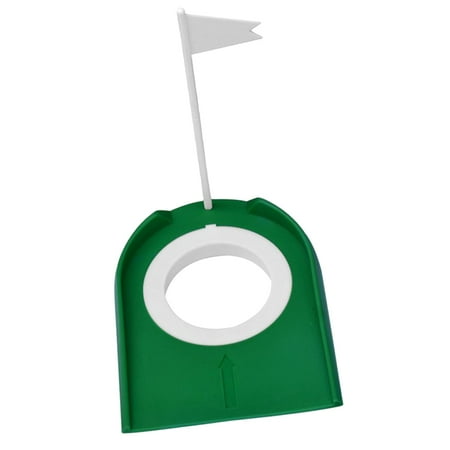Golf Green In Regulation : What it is
Golf Green In Regulation: What it is
When it comes to playing golf, there are many technical terms and abbreviations that might leave beginners scratching their heads. One such term is "Green in Regulation" or GIR. If you're new to the game or curious about this term, you've come to the right place. In this article, we'll explain what Green in Regulation is all about, why it's important, and how you can improve your GIR stats. So, grab your clubs and let's dive in!
What is Green in Regulation?
Green in Regulation refers to a successful shot played by a golfer that lands the ball on the green (the well-manicured surface surrounding the hole) within the regulated number of strokes. The regulated number of strokes varies depending on the hole's par, which is the pre-determined number of shots a skilled golfer is expected to make in order to complete the hole.

Creating Your Own Indoor Putting Green
If you're serious about improving your golf game, having the convenience of practicing at home can be a game-changer. Setting up your own indoor putting green can provide you with the opportunity to work on your stroke, aim, and overall putting skills whenever you want. To help you get started, here's a step-by-step guide on creating your own putting green:
1. Choose the Right Space
First and foremost, you need to select the right space in your home where you can set up your indoor putting green. Ideally, choose an area with sufficient space and a flat surface. It could be a spare room, garage, or basement.
2. Measure and Prepare the Space
Measure the dimensions of the chosen space and determine the size of the putting green you want to create. Ensure that the area is clean and free from any obstacles that may hinder your putting practice. Remove any furniture, rugs, or other items that may get in the way.
Importance of Green in Regulation
Green in Regulation is a crucial statistic for golfers of all skill levels. It signifies a player's ability to hit accurate approach shots and reach the green within the expected number of strokes. Let's take a look at why GIR is important:

Improving Your Green in Regulation
If you're looking to improve your GIR stats, here are a few tips to help you reach the green more consistently:
1. Practice Your Approach Shots
One of the key factors in achieving a better GIR percentage is to improve your approach shots. This involves developing your ability to hit accurate shots from various distances and lies. Spend time practicing different shots, such as high fades, low draws, and straight shots, to gain more control over your irons.
2. Work on Your Short Game
Your short game, particularly your chipping and putting skills, play a significant role in achieving a better GIR percentage. Even if you miss the green, having strong short game skills can help you recover and save par or even make birdies. Dedicate time to practicing your chipping and putting to see improvements in your overall game.
Frequently Asked Questions
Q: Does GIR include putting?
A: No, GIR specifically refers to hitting the green in the regulated number of strokes. Putting is a separate aspect of the game.
Q: What is the average GIR percentage for PGA Tour professionals?
A: The average GIR percentage for PGA Tour professionals is around 65-70%. This means they hit the green in regulation around 65-70% of the time.
Q: How can I track my GIR stats?
A: Many golf scorekeeping apps and websites allow you to track your GIR stats automatically. Alternatively, you can manually record your GIR by documenting the number of greens you hit versus the number of regulation strokes for each hole.
Q: Are GIR stats important for amateur golfers?
A: Yes, GIR stats are important for amateur golfers as well. Tracking your GIR percentage can help you identify areas for improvement in your game and focus on specific aspects, such as your approach shots and short game.
With these tips and a good amount of practice, you'll be well on your way to improving your Green in Regulation stats and becoming a more consistent golfer. Remember, golf is a game of patience and perseverance, so keep at it, enjoy the process, and have fun on the greens!
Sources:
Disclaimer: This article is intended for informational purposes only and does not constitute professional advice. The content is based on the information available at the time of writing and may be subject to change.
Green In Regulation - GOLFSTUN.DE
 Image Source : golfstun.de
Image Source : golfstun.de regulation golfstun
Golf Putting Green Regulation Cup Hole With Detachable Flag Yard Office
 Image Source : www.walmart.ca
Image Source : www.walmart.ca LARGE GOLF FLAG Regulation Tube Putting Green Flag Nylon Flags Outdoor
 Image Source : picclick.co.uk
Image Source : picclick.co.uk Golf Putting Green Regulation Cup Hole Indoor Practice Single | Walmart
 Image Source : www.walmart.ca
Image Source : www.walmart.ca Green-In-Regulation- Golf Sidekick
 Image Source : www.golfsidekick.com
Image Source : www.golfsidekick.com So Bestimmen Sie, Welche Rute Und Rolle Sie Kaufen Möchten
 Image Source : p-advice.com
Image Source : p-advice.com Golf Practice Putting Green Yard Nylon Golfer Outdoor | Walmart Canada
 Image Source : www.walmart.ca
Image Source : www.walmart.ca Green In Regulation (aka GIR) – Golf Term
 Image Source : golf-info-guide.com
Image Source : golf-info-guide.com golf gir term regulation putting part green bentgrass ii greens info guide tip
Green in regulation. Golf gir term regulation putting part green bentgrass ii greens info guide tip. So bestimmen sie, welche rute und rolle sie kaufen möchten. Golf putting green regulation cup hole with detachable flag yard office. Green in regulation (aka gir) – golf term